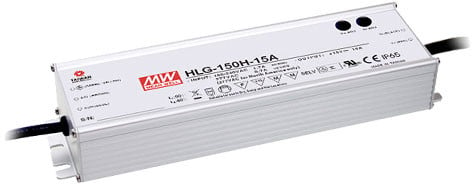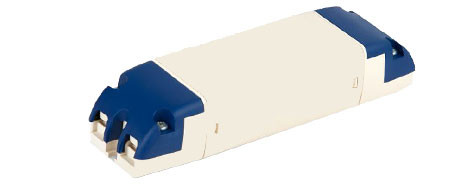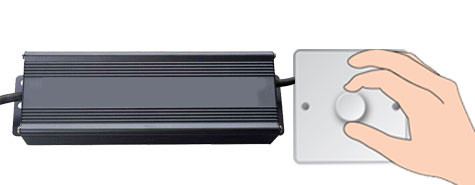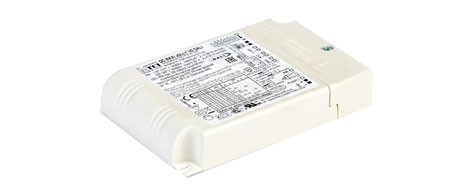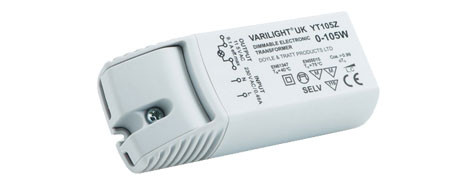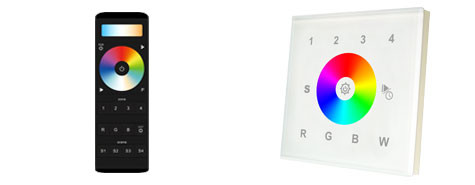LED Drivers
- Converts Mains AC Voltage into DC
- Provides Precise Power for Delicate LEDs
- High Quality Products – Built to Last
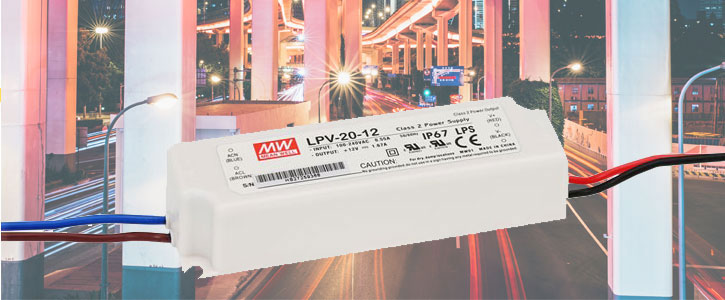
There are two main types of LED drivers (also known as LED power supplies or an LED transformer). The constant voltage output which are mainly used for powering LED tape and the are constant current output which are mainly used for high powered downlights and ground lights.
Frequently Asked Questions On LED Drivers
- What is an LED driver and how does it work?
- Which LED driver do I need?
- Is it wired in series or parallel?
- Does my driver need to be water proof?
- Will your dimmable LED drivers work with my dimmer?
- Can you supply other LED drivers that aren't listed on your site?
- I want to dim colour changing LED tape, do I need a dimmable driver?
- What is the difference between an LED driver and transformer?
- How are you going to mount it?
- How will it connect to the existing lights and will you need any other connector blocks or accessories?
1. What is an LED driver and how does it work?
LED lights operate on lower, more precise voltages than traditional lights such as halogen, and incandescent. They also operate on DC (Direct Current) rather than AC (Alternating Current).
An LED driver is an electrical product that converts the incoming mains voltage of 230V AC into DC and drops the voltage. DC voltage requirements for LEDs are mainly 12V or 24V DC which is classed as constant voltage. Some LED lights require a constant current supply which is usually 350ma or 700ma.
Most LED drivers have a standard mains voltage (230V AC) input but the output voltage needs to be specified when ordering.
2. Which LED driver do I need?
This depends on which type of LED light or lights you need to power. If you're powering LED tape, you'll need a constant voltage led driver that has a 12V or 24V DC output.
The wattage (or size) of the driver is determined by the load or total wattage of the LED tape. This is determined by multiplying the length of the LED tape by the wattage per metre. For extra-long runs you can even link up multiple LED drivers on the same circuit by adding amplifiers.
Some led lights like LED ground and marker lights are constant current and require a 350ma or 700ma supply. These types of products also require specific voltages so it’s important to get them to match. When possible it’s better to use the manufacturers recommended products which will have been extensively tested to work with them.
Some manufactures don’t offer dimmable constant current LED drivers, if you’re looking for one and are not sure if it will work you need to follow these three rules:
A. Match the milliamp rating which is usually 350ma or 700ma but could be 500ma, 1050ma and there are many others.
B. Make sure the wattage of the driver is higher than the total wattage of the LED lights that are connected to it.
C. Check that the voltage is correct. Constant current LED drivers have really strange voltage outputs, some have very wide ranges like 2-52 volts but some are very specific. If you’re connecting multiple lights to one driver you need to add up the required voltages of each and make sure they are within the range of the driver. If in doubt please contact us for advice.
3. Is it wired in series or parallel?
Constant voltage products are wired in parallel and constant current products are wired in series. If you’re wiring just one LED light to a constant current LED driver, the wiring is essentially the same as a constant voltage driver, but when you're wiring more than one lights you link them together like a daisy chain. The diagram below shows how to wire in series:
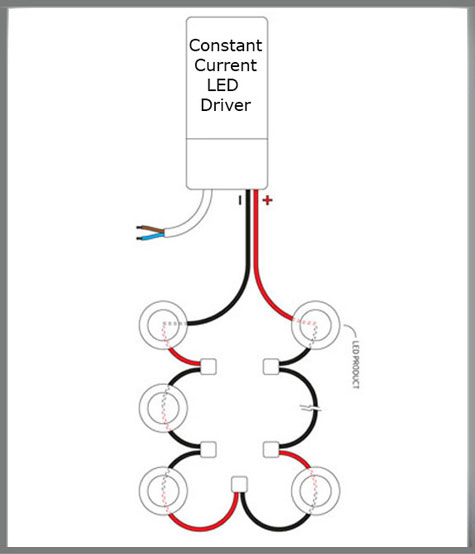
Constant Current LEDs must be wired in series. This ensures that a constant regulated current is provided to each of the LEDs on the circuit. The most commonly used constant current ratings are 350ma and 700ma.
Dimming constant current drivers is similar to constant voltage, both types can be dimmed with an LED compatible dimmer switch. Its always worth double checking that the driver is mains or TRIAC dimmable, then you can use an standard LED dimmer switch such as Varilight V-Pro. Their are many constant current LED drivers that are 0-10V dimmable which require an analogue 0-10V dimmer switch which usually requires an extra wire.
Wattage; always ensure that the correct combination of LED fittings and drivers are selected. The total wattage of all of the LED lights must not exceed the maximum wattage of the LED driver. When dimming LEDs, you may also have to consider the minimum wattage of the driver, sometimes you need to load the driver up to 60% to avoid flickering.
4. Does my driver need to be water proof?
This depends where it’s being mounted. Most electrical products like LED drivers have an IP rating which stands for International Protection. This is an indication of a products resistance to dust and water, the first digit is for its resistance to dust and the second is for its resistance to water. Something with an IP65 rating is water and dust resistant but not resistant enough to be placed under water. For under water installations you’ll need an IP68 rated product.
If you're installing it outside, then it should be fully water and dust resistant and fitted inside an electrical enclosure.
5. Will your dimmable LED drivers work with my dimmer?
It really depends on which dimmer switch you've got. For starters it needs to be either a leading or trailing edge dimmer switch and you need to make sure it's capable of taking the load.
We offer various LED compatible dimmer switches that work perfectly. The Varilight V-Pro series dims up to 100W of LED load or the V-Com series can dim up to 600W on one switch! Our mains dimmable drivers are also compatible with home automation systems such as Lutron, Lightwave and many more.
6. Can you supply other LED drivers that aren't listed on your site?
Yes, we can offer many other types of led drivers and we can even supply bespoke drivers that are made specially to order. These are available in dimmable or non-dimmable versions.
7. I want to dim colour changing LED tape, do I need a dimmable driver?
No, when you're dimming colour changing LED tape you do the dimming using a controller, in the same way that you do the colour changing. A non-dimmable driver is used for this type of installation.
8. What is the difference between an LED driver and transformer?
An LED driver (or LED power supply) has a DC (Direct Current) output. The vast majority of LED lights require a DC input. A low voltage, which was used primarily with low voltage halogen lamps is AC to AC.
9. How are you going to mount it?
If it’s being mounted under a kitchen cabinet make sure it’s got screw holes so it can be mounted directly onto the surface.
10. How will it connect to the existing lights and will you need any other connector blocks or accessories?
If it’s a constant current LED driver we have a range of constant current connector blocks that help with wiring. For LED tape we have the 162 Series connectors which allows you to create a plug and play connection system. These are far better than using ordinary strip connectors.

